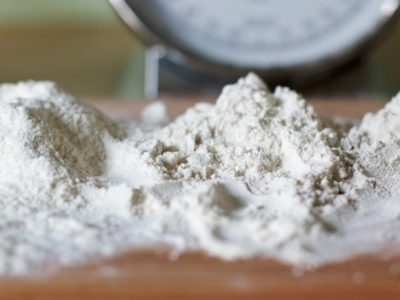Avoiding gluten can take some effort. Ingredients derived from wheat and other gluten-containing grains can be found in the vast array of packaged and manufactured foods, but also in some ingredients normally considered to be processed foods. The following list includes some of these hidden—and not-so-hidden—sources of gluten.
- Asian rice paper
- atta flour
- bacon (check ingredients)
- barley
- barley grass
- barley malt
- beer (unless gluten-free)
- bleached or unbleached flour
- bran
- bread flour
- breading
- brewer’s yeast
- bulgur
- coating mixes
- communion wafers
- condiments
- couscous
- croutons
- dinkle (spelt)
- durham
- einkorn
- emmer (durham wheat)
- farina
- farro (called emmer wheat except in Italy)
- food starch
- french fries
- fu (a dried form of cluten)
- gliadin
- glue used on some envelopes, stamps, and labels
- gluten
- gluten peptides
- glutenin
- graham
- gravies
- hydrolyzed wheat gluten
- hydrolyzed wheat protein
- ice cream (may contain flour as an anticrystallizing agent)
- imitation fish
- kamut
- lunch meats
- maida (Indian wheat flour)
- malt
- malt vinegar
- marinades
- matzah (aka matso)
- mir (a wheat and rye cross)
- nutritional and herbal supplements (may contain gluten)
- oats
- panko (bread crumbs)
- pilafs (containing orzo)
- prepared foods (often contains gluten)
- processed cereals
- rye
- salad dressings
- sauces
- seitan
- self-basting poultry
- semolina
- some medications (prescription or over the counter)
- soup bases and bouillon
- soy or rice drinks (may have barley malt or malt enzymes used during manufacturing)
- soy sauce (except for a wheat-free version, called Tamari)
- spelt
- spice mixtures (often contain wheat as an anticaking agent, filler or thickening agent)
- starch
- stuffings
- syrups
- thickeners
- triticale
- wheat
- wheat bran
- wheat germ
- wheat grass
- wheat starch
Common sources of Gluten/Wheat contamination:
- millet, white rice flour, buckwheat flour, sorghum flour and soy flour
- foods sold in bulk (often contaminated by scoops used in other bins and by flour dust)
- toasters, grills, pans, cutting boards, utensils, appliances, and oils that were used for preparing foods containing gluten
- flour dust
- knives double-dipped into food spreads after spreading on bread (can leave gluten-containing crumbs)
- powder coating inside rubber gloves (may be derived from wheat)
- art supplies, including paints, clay, glue, and play dough; gluten can be transferred to the mouth if hands aren’t washed
- personal care products (like shampoo) and household products may be transferred to the lips if ingested
- some waxes or resins on fruit and vegetables


 How to Avoid Soy
How to Avoid Soy